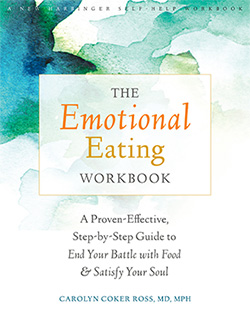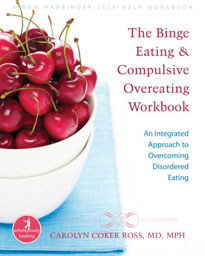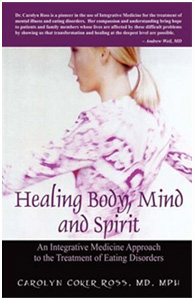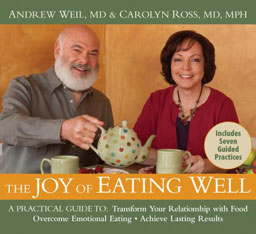
Listen to the podcast here:
Mindsight: Awaken The Power Of Your Mind with Dr. Daniel Siegel
We’re going to be talking about how to awaken the power of your mind with Dr. Daniel Siegel. This will be a discussion of the five mindsight exercises to make your brain and relationships healthier and stronger in your life. These mindsight exercises that Dr. Siegel will be telling us about will enable you to balance your emotions, strengthen your attention, feel better in your body, deepen your relationships and open your mind to living in more creative and fulfilling ways. Let me tell you a little bit about our guest. Dr. Daniel Siegel is a Clinical Professor of Psychiatry at the UCLA School of Medicine. He is the Codirector of the Mindful Awareness Research Center. He’s also the Executive Director of the Mindsight Institute, which offers online learning and in-person lectures that focus on that development of mindsight in individuals, families and communities.
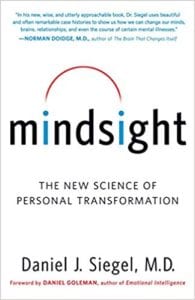
Mindsight: The New Science of Personal Transformation
Dr. Siegel has published extensively for the professional audience. He serves as the Founding Editor of the Norton Professional Series on interpersonal neurobiology, which has over two dozen textbooks. His book, The Mindful Therapist explores the application of focusing techniques for the clinician’s own development as well as use with their clients. His book, Mindsight, offers the general reader an in-depth exploration of the power of the mind to integrate the brain and promote well-being. In his parenting book, The Whole-Brain Child with Tina Payne Bryson PhD, explores the application of mindsight to parenting. Welcome to the show, Dan.
Thanks, Carolyn. It’s great to be here.
Let’s start with some of the basics. I’m going to refer a lot primarily to your book, Mindsight, which I’ve read. It’s a great book to tell more about what you’re talking about. Can you explain what you mean by Mindsight?
Mindsight is a word that means being able to see the mind in yourself or others. It overlaps with the idea of having insight into your feelings and your thoughts and how your memories work. Also how feelings and thoughts and memories work in someone else that would be empathy. We have an emphatic understanding of others and we have an insightful understanding of ourselves. Mindsight is a word, at least at the beginning, that means how we see the mind in ourselves and others.
Does it have anything to do with intuition?
Intuition would be one very important part of sensing your own internal world. In fact, there’s some interesting research and all of this is based on science. It looks at how your organs, your heart, your intestines, even your muscles and bones send signals up into the head part of your nervous system, what we call the brain. Those signals give you an intuition about something that isn’t logical. It’s not rational but it can be sometimes, not always. It can be very reliable in terms of how it gives you insight into what’s going on that we call intuition. If you have an intuitive feeling about something, is your heart processing something or your intestine say a gut feeling that we talk about or a heartfelt sense? It’s not just the poet’s metaphor. It turns out it’s an actual mechanism in the body.
Is it a nervous system process? What would be the survival benefit of having that?
The benefit in terms of your social life, you’re very quickly responding to signals that happen in your body, not just up in your head where you’re thinking. They give you a feeling that arises in your awareness. You’d go, “This just doesn’t feel right. I may be thinking about this problem in a certain way, but there’s something that feels wrong about it. Either this is not someone I can trust or the signals I’m getting from that person means something different than what they’re saying. There’s some larger issue going on here that I’m not thinking through.” In these many ways, it’s a deep source of wisdom. We called the wisdom of the body that gives you this intuitive sense. That use of the word intuition is different from some people use. The word being an intuitive or having intuition is more like seeing the future. That’s not what I’m using the word here. I’m using it literally as a neurological process that uses as a way of decoding information that’s often outside of awareness initially. That isn’t based on logic, but it can be very important and a source of wisdom.
There’s a fair amount of information also about intuition in a medical setting. For example, a person may go to their doctor and say, “I know that I have something wrong with my liver or whatever.” They may have a dream about some part of their body that’s experiencing a medical problem. How does that fit in with what you’re talking about?
[bctt tweet=”The brain is a living organ of the body and it needs the proper nutrients.” username=”CarolynCRossMD”]There’s a real need for research into something that could eventually be understood. There’s a lot of sense that might be a very valid way in which literally specific set of circuits that go up to particular pathways from the interior of the body, up into the head. These give you what’s called interoception. You can show that you can actually teach people through exercises how to become more aware of their bodies. It shows that these circuits, especially an area in the brain called the insula, get not only more active but they grow in size. People who have more active and more positive responding and also larger insulas not only have more intuition about these bodily things that can be aware of their bodily signals. What’s fascinating is they use the same circuits to have a sense of what’s going on inside of someone else’s feelings.
Would that be someone like a medical intuitive where they have an enlarged insula?
I don’t know if that’s ever been studied and this is more about someone who’s more emphatic rather than the sense of just feeling someone’s body and knowing where there’s something going wrong. Although that might be that way. I don’t know of any studies that look at the insula of medical intuitives. We do know people have different degrees of insula ability and it is trainable. You can teach it. It’s like a muscle, you can develop it. There are some fascinating ways in which just relaxing what’s often a very rigid approach to science, the truly scientific view is to say, “Let’s look at what close observations tell us. Can we learn something about that?” It doesn’t always pan out, but I think we have to be open-minded to scientifically approach some of this phenomenon that people describe.
In your book, Mindsight, you mentioned a number of cases of people who are cut off from their emotions, their feelings and even cut off from empathy. What causes that? I was moved by that one 90-something-year-old. That was such a great story. I don’t know if you could summarize that, but I just wonder if you could talk a little bit about why people end up being so cut off.
In that book, what I did was offer true stories with the identifying features of people hidden, so you wouldn’t know who they were. These are true stories of people who came to me struggling with different ways. Their life wasn’t going ideally. In this case, it was a 92-year-old gentleman. I call him Stuart in the book. He was disconnected from his emotional life. It turned out to understand him, we needed to go do two things. We need to look at why he was so rigid and shut down. Rigidity is one end of a spectrum where in the middle you have this harmonious flow, call it integrated. On one end, you have rigidity and on the other end, you have chaos.
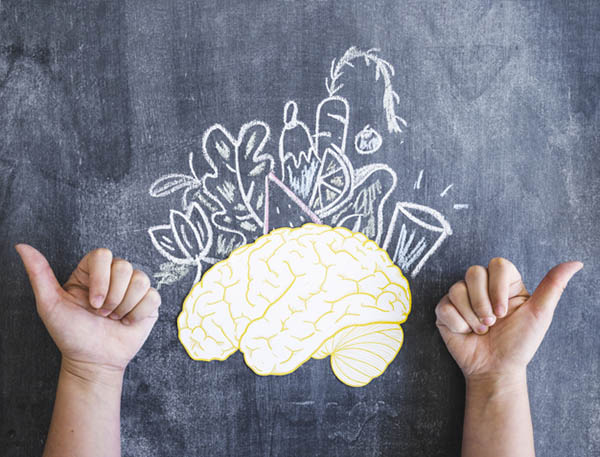
Mindsight: The brain continually grows throughout the lifespan.
In Stuart’s case, his life was filled with suffering not because he was chaotic but because he was rigid. The question is when you see rigidity or chaos, where is this process called integration that’s being impaired? Integration is when you link different things together, like the left and right or the up and down or two people honoring differences and then promoting linkages. In this framework that I work in called interpersonal neurobiology, we look at all the sciences, put them together and say health is integration. For Stuart, this 92-year-old who comes in with rigidity, the question that I would take the journey on not only with Stuart but with the reader is to say, “If you have rigidity in your life, where’s the integration that’s impaired?” We look in the present moment of what’s going on with Stuart. He wasn’t aware of his emotions. A colleague of his has gotten ill and he knew when he felt nothing that that’s wrong. That he should be feeling something, but he had no access to a sense of what that meant to him. His colleague, who he worked with for decades was ill and dying. Also, his wife had gotten sick and he just withdrew into his books. He is an attorney. In this situation then, we wanted to ask why is he so cut off from his emotions.
I’m trained as a scientist in the field of attachment, where I study how parents communicate with their children. How those patterns of communication can shape the way the mind develops. In a book I wrote called The Developing Mind, you see all the science of it. In the practical side of it, what it means, and Stuart laughed about this, was that we could actually do this research validated assessment. Over 20,000 interviews have been done with this instrument. We know it’s valid from the studies. I did this assessment and he said, “I’m 92. Why are you asking me about my recollections of my childhood?” I said to him, “Your childhood may have had 92 years ago but the synaptic shadows, the impact of those experiences on the structure and function of your brain remain and they’re still changeable.” He goes, “I’m 92.” I said, “The brain continually grows throughout the lifespan.” The key is to find out how the brain was not integrated because of experiences or genetic things that you inherit or random things that happened. There are reasons we have blocked integration, not just experiential. In Stuart’s case, in fact, we found a lot of experiential evidence for how the emotionally barren environment that his parents created led to an underdevelopment of the right hemisphere of his brain.
You’re talking about real physical wiring in the brain?
This is a hypothesis. We’ve put Stuart in the scanner. If you read the book, The Developing Mind, you’ll see the pretty carefully argued hypothesis which has support. It’s not proven, but it’s a support that can predict outcomes of future studies. Also it was incredibly useful on a day-to-day clinical basis. The hypothesis is if your parents are cold and not tuned into, that is not focusing their attention on your internal life or feelings, thoughts and your subjective inner life. What happens is the part of your brain that is connected to that social life doesn’t get the nurturing it needs. It’s like a garden that doesn’t get watering. The other side of the brain, left side of the brain, which is less connected to the body and the lower parts of the brain area called the cortex are richly innervating the right side of the brain.
When we say that the right had developed much, it means that Stuart developed as a kid a more body distance. Since the body works with the brain stem and the limbic area, these lower areas of the brain to create emotion, he has a more emotionally distant way of living. The left hemisphere has emotions for sure but they’re a different quality. They’re less directly connected to the body. There’s a lot of different theories that talk about in The Developing Mind but just for the purposes of understanding Stuart, you could understand his interview findings and his whole life in fact, not just what he’s presenting with now as a 92-year old. All over decades, almost a century, we could understand his life by having this extreme dominance of the left hemisphere.
[bctt tweet=”Health is best predicted by the quality of your close relationships.” username=”CarolynCRossMD”]The good news is what I had to do knowing that and seeing that integration wasn’t there because the left was over differentiated, the right was undifferentiated. My job was to give his right hemisphere a chance to grow, which meant connecting that sense of awareness from the cortex with the signals from the body. In fact, it’s the right insula. I had to develop his right, which I did. Then worked with them on dealing with nonverbal communication which the right hemisphere specializes in. Autobiographical memory, which the right hemisphere specializes in. He became, as his wife said, “As if he had had a brain transplant.” He changed so much. The beautiful thing was he started feeling a joy in his life as well as feeling directly sorrows about his colleague and stuff. He began to have access to his body. Access to his emotions, access to his autobiographical memory, access to people’s nonverbal communication like eye contact, facial expressions and tone of voice. All of that made his life very different in its inner texture and its interpersonal quality.
We see in psychiatry that someone like Stuart would probably have been put in normal situations on an antidepressant. You took a totally different approach. I’d like to talk a little bit about what you say that creating this change in the mind is a learnable skill. I was stunned that first of all, this 92-year-old patient of yours, Stuart, came in and was not given a prescription for antipsychotic or antidepressant. Secondly that in your book, you talk a lot about how this is a learnable skill. For someone who’s 92 to be able to change to that degree is startling.
If I had read it, I would have had my doubts. All those stories are true. I can’t write fiction. The amazing thing is when you look at the science of what’s called neuroplasticity, how the brain changes in response to experience, it isn’t that surprising. The key is for all of us to learn how to give ourselves the experiences that help integrate the brain. Once you realize that, the exciting thing is these are all things you can learn. For Stuart at 92, it was exciting because he had never been in therapy before. It was all so rewarding for him. There’s something exquisitely beautiful about being someone take the courageous step to say, “Maybe there’s something going on in my life that isn’t as good as it could be or maybe not so good and then say, can you help me?” To be able to draw on the science to say, “I think I can help you. Let’s work together. We’re both experts, maybe I know a little bit about the science but you know a lot about yourself. We’re both coming in this collegueal way. Where we’re going to work together. I’ll give you what I know, you will give me what you know. We’ll both share in our collective joining.” The experience is incredibly rewarding to conjoin with someone when you’re prepared with the science. It is startling because when his wife called, “What did you do to him? He’s so different.” The fact is integration is a natural state that the brain wants to get in and stuff gets in the way.
Sometimes that stuff is genetic and it has nothing to do with what our parents offered to us or what experiences brought us. It’s primarily genetic. Sometimes it’s an infection, sometimes it’s a toxin. Sometimes it’s a random thing that happened to you. Sometimes it’s what your peers say to you. Sometimes it is what happened to your parents. Sometimes it’s your own cycle that you get into your thinking. That’s a form of internal experience. The beauty of this approach of interpersonal neurobiology, and I’m teaching it to lots and lots of therapists, is that it does empower the individual, the couple or the family. Whoever you’re working with to work with you as a professional in this collaborative way to say, “What’s going on? Where’s their integration? That’s not happening.” Sometimes you need medications but oftentimes you don’t. If you do, you do. That’s fine. Even if you are using medications, find out how to promote integration. Then what you’re doing is you’re not just putting a Band-Aid on a problem. You’re actually identifying the very source of the chaos or rigidity that are basically what all the symptoms of psychiatry are about.
Then you’re saying even if I need to use a medication, I understand this is an impaired integration. If I am using a medication or not, my job is to offer to this person a way to focus their attention in a way that harnesses the power of neuroplasticity. That is the way of focusing attention, which is a form of experience and change the brain. It’s not just change the brain, it’s to integrate the brain. In our view, integration is health, impaired integration is impaired health. All of the psychiatric conditions, whatever they are, formal or even informal, all different mental sufferings we have, we see as impaired integration. We define the mind as a process that’s regulating energy and information flow, both in your body and in your relationships. We use those two sources of mind relationships and the body as where we’re trying to promote integration both between us and within us. Then you have the whole model there. What’s great about it is it’s empowering everybody and it’s bringing a sense of hope and a sense of, “I can understand in a deeper way what’s going on with me. It just doesn’t have a name. It’s something I can understand and I can do something about it.”

Mindsight: We define the mind as a process that’s regulating energy and information flow, both in your body and in your relationships.
As you were talking about rigidity and chaos, my area of expertise is in treating eating disorders. It’s interesting because on the one end of the spectrum of eating disorders with anorexia nervosa, there’s extreme rigidity. Then for all of the other eating disorders at the other end of the spectrum, there’s chaos. Even when you look at the diagnoses of personality disorders and so on, the bulimics and binge eaters tend to have more chaotic, impulsive personalities. Where the anorexics tend to have more rigid, anxious and avoidant personalities.
In fact, if you look at the whole Diagnostic and Statistical Manual, all those symptoms of all the syndromes with chaos or rigidity and eating disorders, that challenge that people face is a great example of that. For the rigidity, if someone with anorexia is having trouble with integration, then you would try to apply this model to see the best ways you can help them.
One of the things you didn’t mention is the effect of nutrient deficiencies on the brain. I trained in integrative medicine with Andrew Weil’s program. I saw a lot of rather than using my prescription pad for the first visits that I saw my patients, I would use supplements to boost their brain function; whether it be amino acids or the cofactors that help us to make neurotransmitters. I saw tremendous changes in their behavior.
The brain is a living organ of the body and it needs the proper nutrients. I remember when I was teaching at the Integrative Mental Health Conference that first one that Dr. Weil had, I did the closing keynote address. What I did there was build on the idea that you’ve got to have the fertile soil before you plant your seeds. Nutrients making the soil fertile. Then once you have fertile soil, you’ve got to have the right seeds. In a way, the integrative mind training exercises are the seeds. If you don’t have the soil, they’re not going to start growing. You’ve got to have the right nutrients. That’s not just food, it’s also exercise and good sleep. There are a number of factors that go along with promoting neuroplasticity.
I was interested also in asking you a little bit about people who have more severe forms of mental illness and how does your approach work in that setting, with someone with schizophrenia.
I wanted to make sure that Stuart, the 92-year-old, didn’t have depression. I had to look through all the symptomatology and make sure I wasn’t missing something. Not everyone responds as fully as he did by any means. Jonathan, another case with a six-year-old boy who I talk about in the Mindsight book. There you’ll see someone who I diagnosed with an early form of manic-depressive illness. He was also diagnosed by two other board-certified child psychiatrists in addition to me. His family just refused medications for him. It was a tough situation. I had been writing a book on mindfulness and its impact on the integrative fibers of the brain. I thought, “Maybe if we work hard, we could actually get these fibers to grow that could regulate his mood.” There were some preliminary studies coming out of Yale that suggested that people with bipolar disorder did not have enough of the inhibitory fibers from a higher part of the brain, the prefrontal region in the ventral lateral prefrontal cortex, down to the lower amygdala in the limbic area. There were other studies that were just coming out at the time that suggested that maybe mindfulness might be able to grow the brain in certain ways.
[bctt tweet=”Expand your sense of connectedness and realize we’re all a part of this interdependent life.” username=”CarolynCRossMD”]With that in mind, we began this program. It doesn’t always work this way but in this case, it worked with him. He was able to respond very well and could reduce very significantly the symptoms he had. Ultimately, he’s been stable for a long time. I keep up with the family. Sometimes you need medications also to stabilize one’s mood, especially if there’s suicidality. I’m not saying replace that but there’s a study by David Miklowitz at UCLA looking at people with bipolar disorder, manic-depressive illness who are wanting to get pregnant. When you’re pregnant, you can’t be on the medications lithium or Tegretol or valproic acid that we often use for people with manic-depressive illness. They want to get pregnant, they can’t be on the medication. It’s a natural group to see if we can give a non-medication-based treatment, and so we have. We started that. That’s a program of UCLA research protocol that’s going on. We’ll get the results pretty soon. The idea is, can you use a mind training program like mindfulness even in a serious psychiatric disorder like manic-depressive illness that has a genetic origin? We believe it’s caused by what your parents did or anything like that. Nevertheless, you can use a mind training program to improve the functioning in someone’s brain by developing certain circuits that may be deficient. That’s the exciting thing.
I think it could also be exciting if you looked at the same thing in patients who have schizophrenia, for example. I know that the World Health Organization has said that, “The way that we treat schizophrenia in the Western world with chronic medications is actually doing more harm than it is good.” In comparison in some of the developing world where they have more social support, they can still be productive and they go on medication only in the acute phase. If there was some way to use the knowledge that you have.
That’s not my particular area, but I remember recently hearing about a study of Omega 3 and schizophrenia with some very positive results in helping the treatment. What you’re saying about family support, at UCLA there was an important set of studies that showed, not that this is causing schizophrenia, but in conditions that are chronic like a predisposition schizophrenia, asthma or diabetes. These are not caused by experience, but in families where there are a lot of hostilities, people don’t do so well. When they did an intervention to reduce hostility and whether you had schizophrenia, diabetes or asthma, you did better in those family environments where there is support, which is completely consistent with the findings that health is best predicted by the quality of your close relationships. In our model, we see the mind as both embodied. It’s affected by what you eat and what your nervous system is doing but it’s also relational. We actually see relationships as not an add-on to the mind, but as fundamental for the mind as what’s going on inside your nervous system.

Mindsight: Mindsight is a word that means how we see the mind in ourselves and others.
I don’t know if you’re aware of Stan Gof. He wrote the book called Spiritual Emergency.
I taught with Stan for a week at his holotropic breathing thing. I was invited as a guest scientist. I do know Stan. In fact, we spent a whole evening with Christina, his wife, talking about Spiritual Emergency. I know a little bit about it.
I wonder how you use the spiritual aspects of mental illness in your work.
I was teaching at Kripalu in Massachusetts and Stan was upstairs doing his holotropic breathing, which is directly a spiritual practice and they make quite a bit of noise with the music they do. I knew that because I’d done that for a week with him. It was very funny because we were doing an interpersonal neurobiology approach to Mindsight. People have used the book I wrote, The Developing Mind, Mindsight and other books as spiritual teaching books, which is my background. For me, I’m new to that word even. When I ask people what spiritual means, they say, “It means feeling connected to a larger whole than just your personal self. It also means having a deeper meaning in your life than just the every day of things.” In that sense, understanding the way the mind creates a sense of self as constricted limited to just the skin, for example, can help us understand why in modern times so many people feel empty of meaning and connection. The two fundamental bases of what people offer me when they say spiritual.
The exciting thing for me is that if you just stay straight with science, you can understand deeply some of the most profound spiritual questions of thousands of years of time. In exploring the mind as this relational embodied self-organizing emergent process that’s regulating energy and information flow. If you read this book I wrote called Pocket Guide to Interpersonal Neurobiology, you’ll see some pretty direct explorations of how the self is created through relationships in the brain. How that sense of self can broaden its sense of identity, which overlaps almost entirely what people talk about in wisdom traditions and spiritual traditions. That comes not from spiritual thinking but from the very direct synthesis of all the disciplines of science into one perspective. People like Deepak Chopra or people in other fields in Buddhist practice, for example like Jack Kornfield, have a book toward interpersonal neurobiology to give the scientific perspective on ancient wisdom traditions. It’s been exciting to be a part of that.
We were talking about the spiritual aspects of mental illness, but I’d like to segue into talking about the five mindset exercises that you say will help make our brain and relationships healthier and stronger. Can you tell us about those?
[bctt tweet=”When science meets spirituality, there’s a feeling of hopefulness.” username=”CarolynCRossMD”]These are mindsight exercises and what that means is they are exercises, which means ways of training your own mind actually sense the mind and bring your own internal world and your interpersonal world into something called integration. We began by saying mindsight is insight and empathy, but it’s actually a bit more than that. That’s a great way to start. Mindsight is the capacity to not only sense energy and information flow inside yourself and others, insight and empathy, but it’s a way of bringing that flow toward integration. The first exercise I’ll tell you about is called the Wheel of Awareness. Anyone can go to my website, which is DrDanSiegel.com, then go to the Resources tab. If you’ve never done any reflective practice, take time in a meditation or mindfulness practice, then start with the Everyday Mindsight Skills and do the Breath Awareness Practice. Just get used to that. You can do that for a few days, a week.
When you’re ready, go also to the Resources tab and you can download these for free, go to the Wheel of Awareness one, two and three. They’re in sequence and you can see one and get to know it and do two. When you feel ready, you can do the third one, which is a little more advanced. In the wheel practice, what you’re doing is this first mindset exercise, which is called the Integration of Consciousness. In this practice, what you’re doing is literally differentiating different aspects of consciousness and then linking them.
In the wheel, it’s called the Wheel of Awareness because it’s the shape of a wheel. There’s an inner hub and there’s an outer rim and there are spokes that connect the hub in the center to the outer rim. When we say integration, we always mean differentiating parts of something. Let’s start with consciousness. In consciousness or awareness, we have two fundamental things going on. One is a sense of knowing. The other is that which is known. You know you’re hearing me, but there’s also knowing that I said Golden Gate Bridge. There’s the knowing, then I said Golden Gate Bridge, but then there’s the Golden Gate Bridge. The hub represents the sense of knowing, the rim would represent anything that is known in this case, hearing the sound Golden Gate Bridge or seeing the image of the Golden Gate Bridge, or having a memory of the Golden Gate Bridge or whatever might come up with Golden Gate Bridge. That will be a point on the rim.
The first step is seeing that this wheel represents the hub of knowing, the rim of that which is known. Then there’s a third aspect of awareness, which is called attention. That’s represented by the spoke. I can say to you, “Let’s begin with the spoke focusing on sound.” We do this in the wheel practice. We actually have you get yourself in the hub by focusing on the breath and letting the breath go. Then you’re in the hub and then we begin with the first of four segments of the rim, which allows you to begin to focus on the sense of hearing. Then we pause and you’d take the time to just let the sounds of the room come in. This would take longer than the time we have, but this will be the first segment where you’re going through hearing, through sight, through smell, taste and touch.
These are ways that your awareness can embrace the experience of the outside world. Then we take a deep breath and we move the spoke over from this first segment of the rim to the second one. This is the one that actually brings in what we talked about at the beginning of our conversation, which is the interior of the body. In science, we call it the sixth sense. It’s interoception, the perception of the interior and we begin with the muscles and bones throughout the body. We’ll begin with the face, the head, the neck, the shoulders, the arms, the torso and the legs. Then we go from those muscles and bones and then we move interiorly to the genitals, the intestines, the lungs, the heart and the whole of the interior body. We do this slowly. What the person is doing is exercising their insula.

Mindsight: Interoception is the perception of the interior. In science, we call it the sixth sense.
You’re seeing we’re integrating consciousness, but we’re also building up our awareness of the body, which is the gateway to emotion. In terms of what we said these exercises do, they’re going to increase integration of consciousness, yes. That’s going to give you incredible flexibility in your life. People who do the wheel, the emails we get back are just so deeply moving because people who before were just flooded by whatever was going on. It’s a metaphor, of course there’s no wheel anywhere but they have a structure for integrating consciousness. That’s the first thing they’re doing. The second part of this exercise is they’re also increasing their ability to sense emotion. Once you begin to sense emotion, you’re stabilizing a lens through which you can sense something, you can then do something about it. Your emotional life becomes more balanced. That’s the second segment of the rim.
For the third part of this exercise, you’re moving the spoke over. This is done with a cadence and a rhythm that feels comfortable and you’re going through it. You then go through the third segment. The third segment of the rim is not the outside world. It’s not the interior bodily world, it’s the world of your mental life. This could be your feelings, like emotions. It could be thoughts with words are not words, it could be memories, images, hopes, dreams, attitudes, longing or desires. This whole landscape of the mind, it’s a seascape. It’s what I call the sea inside. In this segment of the rim, you’re exploring mental life. What’s absolutely amazing about this is that no one knows what a feeling is, no one knows what a thought is.
We have this opportunity for you as the person doing the wheel practice to develop a completely new approach to your own mental life. We do a number of things, but part of what we do is give you an opportunity to just explore the way mental processes like feelings. How do they arise in awareness? Is it sudden? Is it gradual? How do they stay present? How they disappear? What’s the gap like between two mental processes, like a feeling and another feeling or a thought and a feeling or whatever? Then we explore that and there are different ways we do it. What happens is you not only develop integration of consciousness and a different way of dealing with your emotions, you have a different way of actually dealing with your own thought processes, including memory. You can use the wheel practice to actually say, “I want to explore my relationship with my dad. My dad just died so I’m going to do a wheel practice where I’m focusing on my connection with my dad. Let me see what’s left there that feels unresolved. Let me go into my grief about his loss.”
Do you at all connect the emotions, thoughts and feelings to what’s happening in the body, sensations or are you dealing with those separately?
In this practice, the individual is doing it on their own, but you invite them of course to do that. You’re integrating the whole thing. That gives you a whole different relationship with your own mind at this moment, in this sector. Then we move over to the final sector of the rim. Here what happens is you’re given what I call the eighth sense. If you call the experience of the body, the sixth sense, I made up this term seventh sense for just being sensing mental life. The eighth sense is sensing your relational life. What’s your relationship to other people? Like my relationship with you or your relationship with friends and family or community, people that live in your neighborhood, your city. When you have an election, people in the nation are voting for the president.
[bctt tweet=”Everybody’s got something to offer.” username=”CarolynCRossMD”]If you’re moving out and feeling all the people on the planet or all living beings on the planet, I think of it as 3G2P, which is with gratitude, generosity and the giving back. We connect with people on the planet, 3G2P. This is an opportunity to expand your sense of connectedness and realize we’re all a part of this interdependent life. This is where, in terms of the suggestions for what this practice does, it focuses directly on the relationships you have. We’ve improved integration of consciousness so you can be more flexible. You change your relationship with emotion. You’ll understand your thought patterns better. You get your ability to understand yourself more with memory. You’ve worked on your relationships.
The final one I mentioned in terms of inviting you to have a more vital and creative life is we take the spoke and we bend it around. Instead of going somewhere on the rim, the person actually is directing attention straight into the heart of awareness itself. They experience an awareness of awareness. In doing that, I can’t even put words to tell you how amazing this is. When I do this in a workshop with 500 people in the room, inevitably whatever country I’m in, someone will take the microphone to say, “I have to share what happened to me.” It happens every time. When I spoke of attention into the hub itself, suddenly I became aware of how I’m connected to everything. How I am so at peace. I feel so filled with love. I feel so safe. I feel so full and clear. I’ve never felt this way before.
These are people sometimes who have never meditated. When Stan Grof did this, he did this publicly. He said that in public this was one of the most profound meditations he’s ever done in his life. In this time together, you can imagine how I felt because this is a practice. The wheel practice comes from purely scientific reasoning, applied with people I work with to say, “If consciousness is the common way that we bring connections to what we’re doing, and it’s every process of psychotherapy, for example. It’s in every spiritual practice and it’s in every part of education. If integration truly is the source of health, what if we integrate consciousness? I said, “Let me make up an exercise to develop the power of the brain to change if we integrate consciousness differentiating elements of consciousness, and then linking them.” Then amazingly, people start emerging with these experiences that were never intended.
When Stan said that, I was the first scientist to be invited to consult with them. I was giving talks. It was so beautiful and so open-minded. When he came, I did the practice with everybody. I said, “I can teach you things but better you teach yourself. Let me offer you this practice.” I had the whole conference to do the wheel practice. Stan is at the mic, he says, “I just have to say this. This was the most profound meditation I’ve ever done.” It’s so beautiful because when science meets spirituality, there’s a feeling of hopefulness. These don’t have to be divided realms of human endeavors. That we can bring a deep sense of meaning, connection, and stay very grounded in science. Also, embrace the power of our connections with each other.
Do you ever have any conflict with people who considered themselves more religious from a specific religion? I know you’ve spoken all over the world. Does this seem to cross those boundaries?

Mindsight: Any human endeavor to understand truth can be woven into a view of the whole experience of reality.
It’s so interesting maybe because I am a scientist who works in the realm of clinical practice. When Pope John Paul asked me to come to the Vatican, he was very open-minded about this. I’ve spoken with Dalai Lama many times in public arenas. He’s very open about this stuff. I’ve spoken up in Alaska to people from the Inuit Tribes and they’re very open to it. I don’t present this as an alternative view. I say, “If we bring all the sciences together, we call that a consilient approach and say any human endeavor to understand truth can be woven into a view of the whole experience of reality. Everyone has something to offer, like the blind men and the elephant. Everybody’s got something to offer. Let’s try to just put all the pieces together and see what we see. I think that stance that I feel very deeply about taking from interpersonal neurobiology, makes it so that I’ve never had people get upset about it. I’m not trying to replace what they’re doing.
I want to make sure people know how to find out more about your work and your books. Can you give us your website address?
Online, we have a three-year program. We’ve got smaller programs, we have people all around the globe learning how to connect with each other around these issues of mindsight and interpersonal neurobiology. I welcome everybody. The way to get to us is through DrDanSiegel.com. There you’ll see the resources we talked about, the Wheel of Awareness. You’ll see online programs we have. Just click around, you’ll probably get to the Mindsight Institute, which is the home for interpersonal neurobiology. Come join us. We have a whole Mindsight community and we welcome everyone to participate and become members.
It has been such a pleasure to have you on the show, Dan. I appreciate your taking the time to talk with me and it’s been personally very moving too.
It’s my pleasure, Carolyn. Thank you so much for all the work you do.
Important Links:
- Dr. Daniel Siegel
- Mindful Awareness Research Center
- Mindsight Institute
- The Mindful Therapist
- Mindsight
- The Whole-Brain Child
- The Developing Mind
- Spiritual Emergency
- Pocket Guide to Interpersonal Neurobiology
- DrDanSiegel.com
- Resources tab
- Everyday Mindsight Skills
- Wheel of Awareness
About Dr. Daniel Siegel
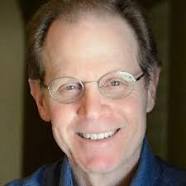 Daniel J. Siegel received his medical degree from Harvard University and completed his postgraduate medical education at UCLA with training in pediatrics and child, adolescent and adult psychiatry. He served as a National Institute of Mental Health Research Fellow at UCLA, studying family interactions with an emphasis on how attachment experiences influence emotions, behavior, autobiographical memory and narrative.
Daniel J. Siegel received his medical degree from Harvard University and completed his postgraduate medical education at UCLA with training in pediatrics and child, adolescent and adult psychiatry. He served as a National Institute of Mental Health Research Fellow at UCLA, studying family interactions with an emphasis on how attachment experiences influence emotions, behavior, autobiographical memory and narrative.
Dr. Siegel is a clinical professor of psychiatry at the UCLA School of Medicine and the founding co-director of the Mindful Awareness Research Center at UCLA. An award-winning educator, he is a Distinguished Fellow of the American Psychiatric Association and recipient of several honorary fellowships. Dr. Siegel is also the Executive Director of the Mindsight Institute, an educational organization, which offers online learning and in-person seminars that focus on how the development of mindsight in individuals, families and communities can be enhanced by examining the interface of human relationships and basic biological processes. His psychotherapy practice includes children, adolescents, adults, couples, and families. He serves as the Medical Director of the LifeSpan Learning Institute and on the Advisory Board of the Blue School in New York City, which has built its curriculum around Dr. Siegel’s Mindsight approach.
Dr. Siegel has published extensively for the professional audience. He is the author of numerous articles, chapters, and the internationally acclaimed text, The Developing Mind: How Relationships and the Brain Interact to Shape Who We Are (2nd. Ed., Guilford, 2012). This book introduces the field of interpersonal neurobiology, and has been utilized by a number of clinical and research organizations worldwide. Dr. Siegel serves as the Founding Editor for the Norton Professional Series on Interpersonal Neurobiology which contains over sixty textbooks. The Mindful Brain: Reflection and Attunement in the Cultivation of Well-Being (Norton, 2007) explores the nature of mindful awareness as a process that harnesses the social circuitry of the brain as it promotes mental, physical, and relational health. The Mindful Therapist: A Clinician’s Guide to Mindsight and Neural Integration (Norton, 2010), explores the application of focusing techniques for the clinician’s own development, as well as their clients’ development of mindsight and neural integration. Pocket Guide to Interpersonal Neurobiology: An Integrative Handbook of the Mind (Norton, 2012), explores how to apply the interpersonal neurobiology approach to developing a healthy mind, an integrated brain, and empathic relationships. The New York Times bestseller Mind: A Journey to the Heart of Being Human (Norton, 2016) offers a deep exploration of our mental lives as they emerge from the body and our relations to each other and the world around us. His New York Times bestseller Aware: The Science and Practice of Presence (Tarcher/Perigee, 2018) provides practical instruction for mastering the Wheel of Awareness, a life-changing tool for cultivating more focus, presence, and peace in one’s day-to-day life. Dr. Siegel’s publications for professionals and the public have been translated into over 40 forty languages.
Dr. Siegel’s book, Mindsight: The New Science of Personal Transformation (Bantam, 2010), offers the general reader an in-depth exploration of the power of the mind to integrate the brain and promote well-being. He has written five parenting books, including the three New York Times bestsellers Brainstorm: The Power and Purpose of the Teenage Brain (Tarcher/Penguin, 2014); The Whole-Brain Child: 12 Revolutionary Strategies to Nurture Your Child’s Developing Mind (Random House, 2011) and No-Drama Discipline: The Whole-Brain Way to Calm the Chaos and Nurture Your Child’s Developing Mind (Bantam, 2014), both with Tina Payne Bryson, Ph.D., The Yes Brain: How to Cultivate Courage, Curiosity, and Resilience in Your Child (Bantam, 2018) also with Tina Payne Bryson, Ph.D., and Parenting from the Inside Out: How a Deeper Self-Understanding Can Help You Raise Children Who Thrive (Tarcher/Penguin, 2003) with Mary Hartzell, M.Ed.
Dr. Siegel’s unique ability to make complicated scientific concepts exciting and accessible has led him to be invited to address diverse local, national and international groups including mental health professionals, neuroscientists, corporate leaders, educators, parents, public administrators, healthcare providers, policy-makers, mediators, judges, and clergy. He has lectured for the King of Thailand, Pope John Paul II, His Holiness the Dalai Lama, Google University, and London’s Royal Society of Arts (RSA). He lives in Southern California with his family.




